Recent Articles
-
Nothing Smartphones in Pakistan June 28, 2025
-
Galaxy Unpacked July 2024: A Closer Look at Samsung’s Upcoming Product Launches June 25, 2024
-
IPadOS 18: AI-Powered Calculator, Smart Script, and More June 11, 2024
Smog in Lahore: Why Smog is a Big Problem and How it Affects Us
Contents
What is smog?
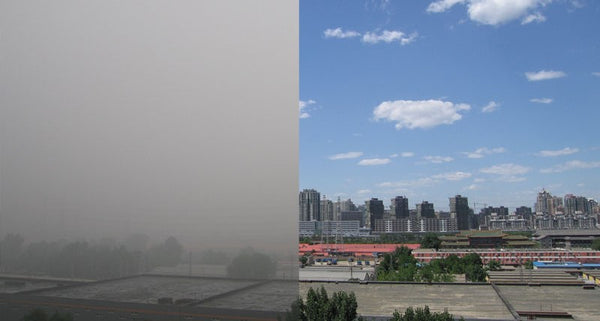
The term smog has been derived from two words smoke and fog. It is a type of air pollution that reduces visibility and occurs when pollutants, primarily from vehicle emissions and industrial processes, react with sunlight in the atmosphere. There are two main types of air smog:
Photochemical Smog:
This kind of smog is caused by the reaction of sunlight with nitrogen oxides (NOx) and volatile organic compounds (VOCs) that are released from industrial discharges and automobile exhaust, among other sources. It contains hazardous substances like nitrogen dioxide (NO2), ground-level ozone (O3), and other pollutants.
Sulfurous Smog:
Burning fossil fuels, especially coal and oil, which include sulfur-based chemicals, results in the production of this type of smog. Sulfur dioxide (SO2) and other particles are released into the environment by these chemicals.
What are the causes of smog?
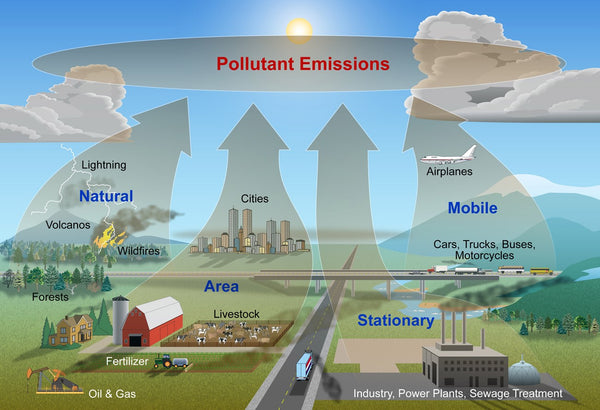
Vehicle Emissions: Vehicles like automobiles, trucks, and motorbikes that run on fossil fuels emit pollutants like nitrogen oxides (NOx) and volatile organic compounds (VOCs) into the atmosphere when they are in motion.
Industrial Processes: Factories and industrial facilities emit a number of pollutants, including sulfur dioxide (SO2), nitrogen oxides (NOx), and particulate matter, all of which contribute to smog production.
Fossil Fuel Combustion: The combustion of coal, oil, and natural gas for electricity production, heating, and industrial activities emits sulfur dioxide (SO2) and nitrogen oxides (NOx), which are major components of smog.
Agricultural Activities: Agricultural practices like the use of fertilizers and the management of animal waste can release ammonia (NH3) and other nitrogen compounds that contribute to smog formation.
Chemical Reactions in the Atmosphere: Pollutants released into the air can undergo chemical reactions with sunlight, leading to the formation of secondary pollutants like ground-level ozone (O3), a key component of smog.
Urbanization and Population Density: High population density and urbanization can lead to increased vehicular traffic, industrial activity, and energy consumption, which in turn contribute to higher levels of smog-forming pollutants.
What are the effects of smog?

Respiratory Issues: Exposure to smog can lead to respiratory problems, including coughing, wheezing, shortness of breath, and exacerbation of pre-existing conditions like asthma and bronchitis.
Eye and Throat Irritation: Smog can cause irritation of the eyes, nose, and throat, leading to discomfort and reduced quality of life.
Aggravation of Cardiovascular Conditions: Smog can worsen cardiovascular conditions, potentially leading to increased heart attacks, strokes, and other heart-related issues.

Reduced Lung Function: Prolonged exposure to smog can lead to decreased lung function, particularly in vulnerable populations such as children and the elderly.
Impacts on Children's Health: Children are particularly susceptible to the effects of smog. It can impair lung development and lead to long-term respiratory problems.
Environmental Damage: Smog can harm plants and ecosystems, leading to reduced agricultural yields, damage to forests, and disruption of natural habitats.
Visibility Impairment: Smog can reduce visibility, particularly in urban areas, which can lead to traffic accidents and transportation delays.
Acid Rain Formation: Some components of smog, like sulfur dioxide (SO2), can contribute to the formation of acid rain, which can harm aquatic ecosystems, soil, and buildings.
Lahore: Most polluted city of Pakistan
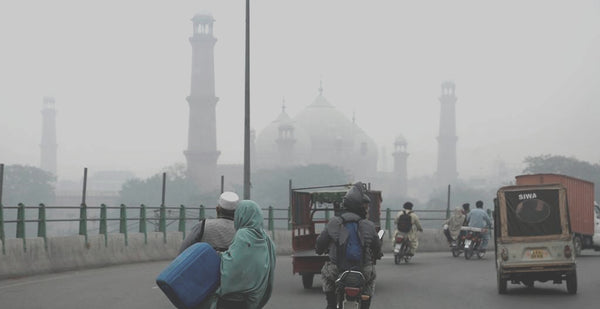
Air quality in Lahore
South Asia's most urbanized nation is Pakistan, whose second-largest city, Lahore, is thought to be the most polluted in the nation due to its 4% annual growth rate. The city's air quality is getting worse as a result of the constant industrialization and urbanization. Currently, Lahore's PM2.5 concentration is 9.5 times higher than the WHO annual air quality guideline value. Due to its hazardous impacts on health, smog is causing a rapid rise in a number of health-related issues and growing concerns about its long-term negative effects on public health. If you believe that the symptoms, such as a cough or flu, are only temporary and can be treated with prescription drugs and home remedies, you should reconsider. Smog in particular is deadly due to air pollution. Approximately 7 million people worldwide lose their lives to air pollution each year, or 800 people per hour. RTIs claim the lives of 600,000 children under the age of fifteen. According to a 2019 Amnesty International (AI) research, pollution was a contributing factor in 22% of deaths in Pakistan in 2015. It is important to keep in mind that most people had never heard of the term "smog" in 2015. Since then, smog and air pollution in general have only become worse. Due to government's lack of an aggressive action plan and the failure of relevant authorities to recognize the seriousness of the issue, it is anticipated that the existing state of the situation will worsen. This clarifies the deteriorating condition of Lahore's air pollution. It also raises alarming concerns about the city's ignored air quality and its impact on public health, as only about 1% of the nation's industrial firms disclose their emissions. The majority of children are vulnerable to these negative outcomes. Exposure to smog during the first year of life increased the incidence of childhood asthma by 19·87%, according to a study detailing the long-term impacts of the great London Smog of 1952.
Prevention Measures
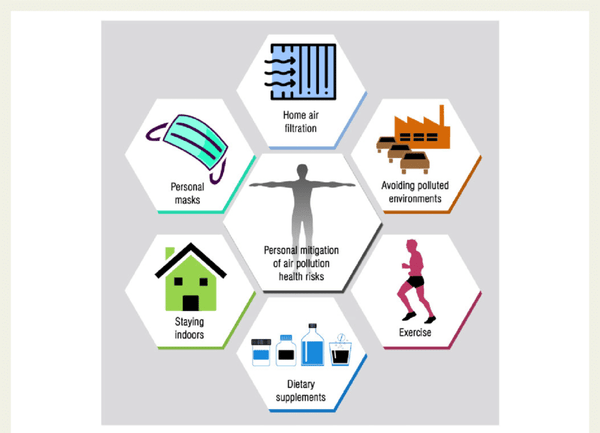
It is crucial to take sensible steps to enhance air quality because of the harm that smog can cause. Lack of finances, consistent standards, skilled personnel, and specialized equipment causes the majority of environmental regulating institutions to lag behind. The government should begin by allocating the necessary financial resources for national afforestation initiatives, monitoring and lowering harmful emissions, and transitioning to renewable energy sources. Given the dire outlook that the current state of affairs presents, it is imperative that a strict action plan be put in place to protect public health and lessen the financial strain on the nation's health system. Not to mention, the public must be informed about the potential health risks associated with this environmental hazard and given advice on how to take precautions and avoid aggravating pre-existing medical disorders. A few efficient measures to do this include the broadcast of public service announcements on television, radio, and the Internet as well as the distribution of educational pamphlets and brochures. Furthermore, you can use air purifier in your houses to clean your house air. When it comes to lowering the pollution levels in your home, air purifiers are quite helpful. When it comes to clearing the air of smoke, dust, and pollen, they work well. You can buy variety of purifiers from cubeonline.pk at different price ranges. Visit cubeonline.pk, buy an air purifier now and protect yourself from harmful impacts of smog!
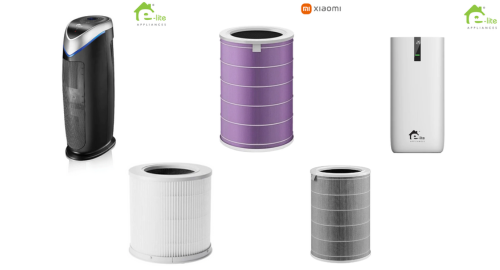


 Debit/Credit Cards Accepted
Debit/Credit Cards Accepted